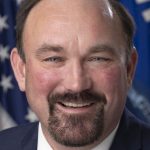
Healthcare.gov offers extended special enrollment period for those impacted by COVID-19

Wisconsinites who have lost their health insurance at any point this year and were impacted by COVID-19 can get coverage through Healthcare.gov due to a technical fix quietly made by federal regulators.
Covering Wisconsin, the state’s navigator agency, and other groups have been working to increase awareness of the special enrollment period created by the Federal Emergency Management Agency declaring COVID-19 an emergency in Wisconsin and all other states.
Normally, those who qualify for a special enrollment period, which can be triggered by a life event like having a baby, getting married or losing coverage, have 60 days to get insurance through Healthcare.gov.
Due to the FEMA declaration, those who have qualified for a special enrollment period at any point since the beginning of the year and were prevented from enrolling due to COVID-19 can now apply at any time. They’d have to complete their application 60 days after starting it.
A Centers for Medicare and Medicaid Services spokesperson said they implemented the “technical update” to automate the process of applying for the existing special enrollment period in effect during a FEMA-declared disaster, a national public health emergency or major disaster, rather than having consumers reach out to the marketplace’s call center.
“I think the recognition really was around the fact that there were some folks who were displaced from work, for example, who thought it would be 30 days, it would be 60 days, it would be some shorter timeframe, and they would be back to work and reconnected with their healthcare and that the pandemic has really evolved in a way where maybe that wasn’t the case,” Department of Health Services Secretary-designee Andrea Palm told reporters last week.
Gov. Tony Evers released a statement last week to bring attention to the special enrollment period.
Tara Straw, a senior policy analyst in the health policy department of the Center on Budget and Policy Priorities, said they noticed the change in August when they got questions on why the Healthcare.gov application had changed to ask if people lost their coverage since the beginning of the year, rather than the last 60 days.
“Unfortunately, CMS did a very quiet rollout of this,” Straw said. “One thing they did right was to put this directly into the application.”
Straw noted that the FEMA declaration special enrollment period isn’t new. Initially, people had to go through the call center to request the period and get bumped up to a case manager to justify how COVID-19 affected their special enrollment period.
Putting it in the application has made a cumbersome process easier, Straw said. She noted the application only catches those who lost coverage, meaning those with a different qualifying event for a special enrollment period will need to contact the call center to get approval.
She noted that an Urban Institute report released last week found that 3 million people nationwide have lost employer-sponsored health insurance coverage and 2 million have become uninsured, so a large number of people could qualify for the period.
Covering Wisconsin Managing Director Allison Espeseth credited national groups, like the Center on Budget and Policy Priorities, for raising awareness about the change last month. Covering Wisconsin has worked to increase awareness among their network and enrollment assisters throughout the state.
Espeseth said they’ve been primarily working over the phone since the early weeks of the COVID-19 pandemic. They’re planning to continue that work, as well as use software that allows consumers to share their screens, emails and text messages when available. They’ll also make themselves available to do in-person appointments when necessary.
Espeseth said they prepared themselves early on in the pandemic to see an uptick in people seeking help given the impact it had on jobs. But that didn’t happen until late July and August.
Espeseth attributed that to some being hopeful they’d find another job or get their job back, employers continuing to pay or offer their coverage for employees as they hoped to “weather the storm and make it to the other side,” and people prioritizing other needs.
Covering Wisconsin is anticipating that those who are newly insured have generally not had to look outside their job for coverage.
“We’re preparing ourselves that this is going to be a very different demographic,” she said. “And getting the word out, helping to raise awareness that there are options and that assistance is available is ever more critical.”
Covering Wisconsin recently received $200,000 from the federal government to support its efforts for the upcoming enrollment period, down from the more than $1 million the organization saw before CMS cut funding in 2017.
This article first appeared in the Wisconsin Health News daily email newsletter. Sign up for your free trial here.





